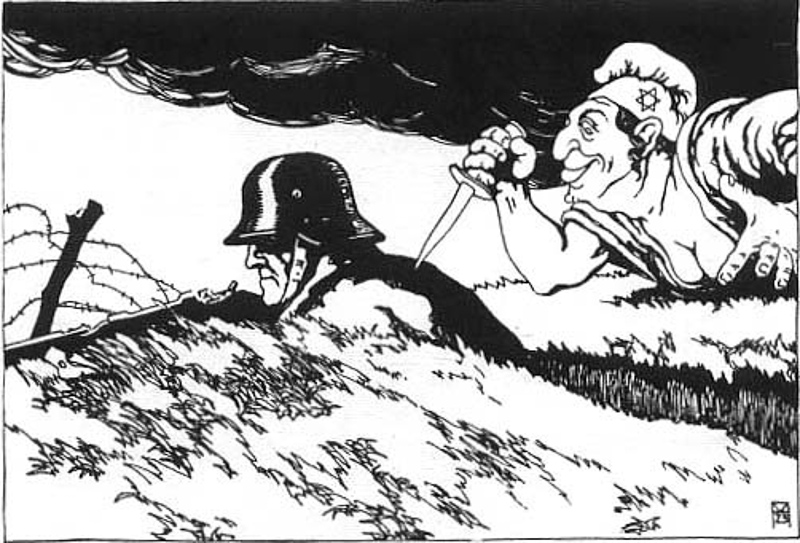BUKU BASA INGGRIS KAKAIT KARO «STAB IN THE BACK»
Temukaké kagunané saka
stab in the back ing pilihan bibliografi iki. Buku kang kakait dening
stab in the back lan pethikan cekak kang padha kanggo nyediyakaké panggunané ing sastra Basa Inggris.
1
The Roots of Nazi Psychology: Hitler's Utopian Barbarism
But a symbol for an unassimilated traumatic defeat does not necessarily have to
be “a stab in the back.” That this particular symbol was adopted by many
Germans and exploited by Hitler probably was due to an already existing cultural
...
2
The Scar That Binds: American Culture and
the Vietnam War
The cause of the wound involves a curious anatomy whereby castration and
impotence result from a stab in the back. Stab Wounds The "stab-in-the-back"
legend holds that certain domestic groups were responsible for defeat of the U.S.
...
3
The Weimar Republic Sourcebook
Recently the tireless propagators of the stab-in-the-back legend have caused
Franz Oppenheimer to reflect that proof that a sharpened dagger was drawn
does not suffice to shift the blame, nor even is it proof of a stab aimed at the
homeland; ...
Anton Kaes, Martin Jay, Edward Dimendberg, 1994
However the 'stab in the back' theory turned that reality on its head. In right- wing
circles it became an extremely popular, if entirely inaccurate explanation for
Germany's defeat. The theme had been promoted by leading army officers
including ...
Martin Collier, Philip Pedley, 2000
5
World War I: A Student Encyclopedia
Stab-in-the-Back. Legend. (Dolchstosslegende). When. the. collapse. came,. the.
German. people. were. psychologically. unprepared. for. defeat. Seductive but
misleading and mendacious myth advanced by German Generals Paul von ...
Spencer Tucker, Priscilla Mary Roberts, 2005
6
Propaganda Legends:
Stab-
in-
the-
Back Legend, Jewish ...
Please note that the content of this book primarily consists of articles available from Wikipedia or other free sources online.
Books, LLC, General Books LLC, 2010
7
Hindenburg: Power, Myth, and
the Rise of
the Nazis
Hindenburg testified at a hearing of the Parliamentary Investigation Committee
on the Causes of the Collapse at the Reichstag in Berlin on 18 November 1919. If
one had to pinpoint the public breakthrough of the 'stab-in-the-back' idea, this ...
8
Justice Imperiled:
The Anti-Nazi Lawyer Max Hirschberg
in ...
THE. ANTIWAR. VETERAN. AND. THE. MILITANT. MONK. The. Stab-in-the-Back.
Trial. C. --OSSMANN WAS PAYING close attention to political developments in
March 1924. Not only were Hitler and his fellow putschists on trial, but a national
...
9
The Causes of
the German Collapse
in 1918: Sections of
the ...
A collection of letters from the front Index Volume 6 [xii + 466 pages] EXPERT
OPINIONS OF VON KUHL, SCHWERTFEGER, DELBRUCK, KATZENSTEIN,
HERZ, AND VOLKMANN ON THE STAB-IN-THE-BACK QUESTION Prefatory
note ...
Germany. Nationalversammlung (1919-1920). Untersuchungsausschuss über die Weltkriegsverantwortlichkeit, Ralph Haswell Lutz, 1934
10
Stab-
In-
the-
Back Legend
The stab-in-the-back legend (German: Dolchstosslegende (help.info)) is the notion, widely believed in right-wing circles in Germany after 1918, that the German Army did not lose World War I but was instead betrayed by the civilians on the ...
Jesse Russell, Ronald Cohn, 2012


